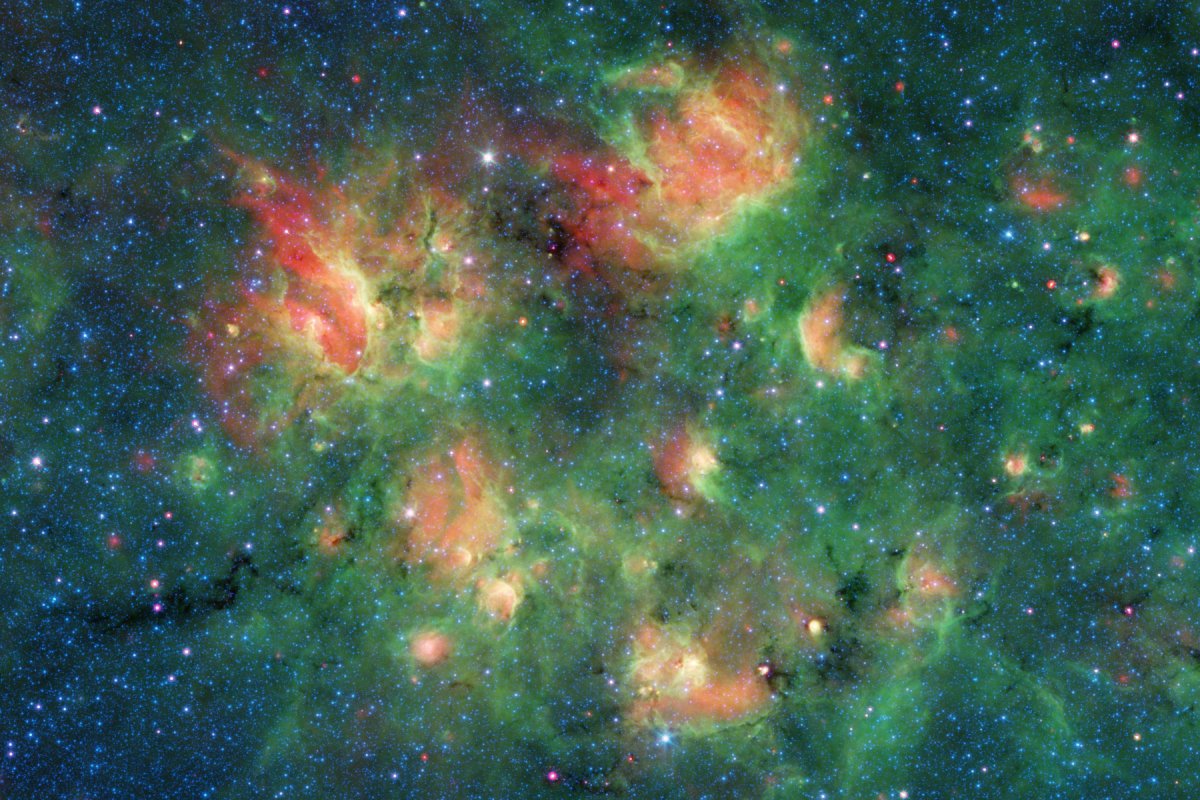The mysteries of a strange era in the universe's history may have been uncovered by scientists.
This "epoch of reionization" was a period in the early universe's history when the first stars and galaxies formed. This is also when radiation ionized the neutral hydrogen that filled the universe, forming in bubbles around galaxies. This process marked the universe's transition from the "dark ages," when it was mostly neutral and opaque, to the one we observe today, which is predominantly ionized.
The major transition from neutral hydrogen atoms to ionized plasma, around 600–800 million years after the Big Bang, may have been driven by dwarf galaxies, according to a new paper in the journal Nature.

This ionization can be done by the intense radiation thrown out by stars, meaning that the point at which most of the hydrogen in the universe became ionized is a sign of galaxies growing rapidly. This ionized hydrogen is thought to have formed in bubbles around galaxies, which slowly expanded and merged with other bubbles across the universe.
The paper explains that there have been several theories as to what drove this period of transition to ionized hydrogen, including quasars—one of the most energetic and luminous objects in the universe, often found in the center of some galaxies—and intensely bright galaxies being mostly responsible. However, the researchers have found that the combined effect of many smaller, fainter dwarf galaxies may have provided enough ionizing energy to drive the transition.
"The ability of galaxies to reionize the Universe depends on their production of ionizing photon density per unit of time and the fraction of this radiation that escapes to ionize the intergalactic neutral gas," the authors wrote in the paper.
"We find that faint galaxies during the first thousand million years of the Universe produce ionizing photons with...a factor of 4 higher than commonly assumed values. If this field is representative of the large-scale distribution of faint galaxies, the rate of ionizing photons exceeds that needed for reionization."
Dwarf galaxies are small galaxies that typically have fewer stars and less mass than larger galaxies like the Milky Way, containing only up to several billion stars, compared to the Milky Way's 200–400 billion stars. They are among the most common types of galaxies in the universe. Dwarf galaxies come in various forms, including elliptical, irregular and spheroidal galaxies.
Some dwarf galaxies are often found orbiting larger ones like the Milky Way and Andromeda and are thought to be remnants of smaller galaxies that have been tidally disrupted.
Do you have a tip on a science story that Newsweek should be covering? Do you have a question about galaxies? Let us know via science@newsweek.com.
Uncommon Knowledge
Newsweek is committed to challenging conventional wisdom and finding connections in the search for common ground.
Newsweek is committed to challenging conventional wisdom and finding connections in the search for common ground.
About the writer
Jess Thomson is a Newsweek Science Reporter based in London UK. Her focus is reporting on science, technology and healthcare. ... Read more





